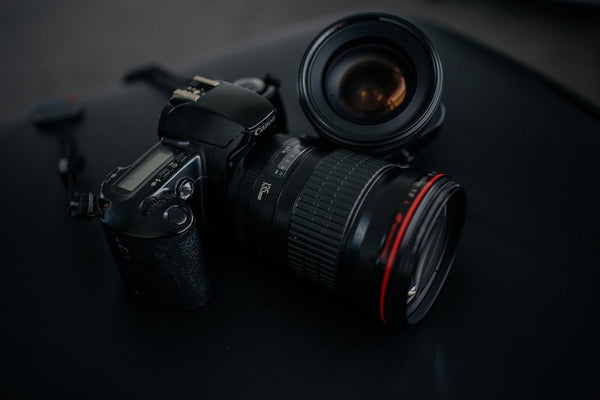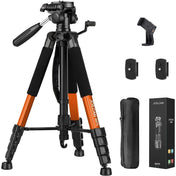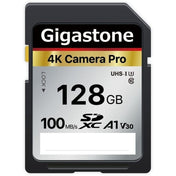When selecting a camera lens, understanding the differences between prime and zoom lenses is crucial for photographers of all levels. Both types offer unique benefits and limitations that can significantly influence your photographic output. If you're considering enhancing your photographic toolkit, let's break down the significant differences that can guide your choices, particularly with popular options such as the 35mm f/1.8G lens that often comes up in the discussion.
What Are Prime Lenses?
Prime lenses are those fixed focal length lenses that provide high-quality images with a simple, straightforward design. While the range of prime lenses is vast, they tend to come in standard focal lengths such as 35mm, 50mm, or even 85mm. A notable example is the 35mm f/1.8G lens, which has garnered fans for its exceptional sharpness and low-light performance.
Benefits of Prime Lenses
- Image Quality: Prime lenses generally outperform zoom lenses in terms of optical quality because they have fewer glass elements and a simpler construction.
- Wider Apertures: Many prime lenses, like the 35mm f/1.8G lens, offer wider maximum apertures, allowing for better low-light performance and more creative depth of field options.
- Lightweight and Compact: With fewer elements, prime lenses are usually lighter and more compact, making them excellent for travel and street photography.
- Forcing Composition: Since prime lenses require you to move to frame your shot correctly, they can help beginners improve their composition skills.
Limitations of Prime Lenses
- Limited Focal Lengths: If you invest in a 35mm f/1.8G lens, you’re limited to that focal length unless you buy additional primes.
- Less Versatility: They do not offer the versatility that zoom lenses provide, especially in dynamic environments where lighting and subject distance can change rapidly.
Delving Into Zoom Lenses
Zoom lenses, on the other hand, feature variable focal lengths that allow photographers to "zoom in" on their subject without having to physically move closer. This type of lens permits a rapid shift in framing, which is invaluable for various photography genres.
Benefits of Zoom Lenses
- Versatile Focal Lengths: Zoom lenses range widely in focal lengths, allowing you to shoot wide landscapes or tight close-ups without changing lenses.
- Convenience: They are ideal for events or situations where you cannot swap lenses frequently, as they allow you to adapt quickly to your photographic environment.
- Cost-Effective: Rather than buying multiple prime lenses, one zoom lens may replace several, saving both money and space in your camera bag.
Limitations of Zoom Lenses
- Optical Quality: Due to their complex construction, zoom lenses may not achieve the same optical performance as prime lenses like the 35mm f/1.8G lens.
- Narrower Apertures: Most zoom lenses have narrower maximum apertures compared to primes, which can limit their performance in low-light situations.
- Heavier and Bulkier: The additional glass elements needed for zoom functionalities often result in bulkier, heavier designs.
Which One Should You Choose?
Choosing between a prime lens and a zoom lens ultimately boils down to your personal photography style, needs, and situations. Here’s a breakdown to help you decide:
If You Favor Prime Lenses...
Opt for a prime lens if:
- You prioritize image quality and low-light performance.
- You enjoy the artistic aspect of photography and want to focus on learning composition.
- You don’t mind moving around to get your shots.
If You Prefer Zoom Lenses...
Choose a zoom lens if:
- You need versatility and flexibility during shoots, such as weddings or sports events.
- You enjoy experimenting with different focal lengths without the hassle of changing lenses.
- You prefer convenience and a lighter camera bag without compromising on multiple lenses.
The Sweet Spot: A Combo Approach
For many photographers, a balanced gear setup might include both a prime lens, like the 35mm f/1.8G lens, and a couple of zoom lenses. This combination lets you leverage the strengths of each type while mitigating the weaknesses. Here’s how this can work effectively:
- Prime for Portraits: Use a prime lens for portrait work where depth of field and sharpness are key.
- Zoom for Events: Opt for a zoom lens for events where you need the flexibility to change focal lengths quickly and easily.
- Mix It Up: When traveling, carry a prime lens for landscape shots and a zoom lens for street photography.
Consider Your Photography Style
Your personal photography style plays a crucial role in deciding between prime and zoom lenses. If you are a street photographer or documentarian, you may find that zoom lenses offer the flexibility you require. Conversely, if you lean towards fine art or portrait photography, investing in fast prime lenses, such as the 35mm f/1.8G lens, can elevate your work to new heights. Always consider the subjects you wish to capture, as they can influence your selection.
Understanding Apertures and Their Impact
Aperture is one of the most critical elements in photography as it affects exposure, depth of field, and overall image quality. Prime lenses, such as the 35mm f/1.8G lens, typically come with larger maximum apertures. This allows for improved performance in dim conditions and the ability to create beautifully blurred backgrounds.
On the other hand, most zoom lenses have smaller maximum apertures, which means they may struggle in low-light settings. If you often find yourself shooting in challenging lighting conditions, the wider apertures of prime lenses should be a significant consideration. Understanding how aperture works can be a game-changer in your photography journey.
Final Thoughts for the Aspiring Photographer
Deciding between prime and zoom lenses doesn’t have to be daunting. Each has unique features that can enhance your photography skills and style. Evaluate your needs, consider your preferred subjects, and experiment with different types of lenses to see what resonates with your creative vision. As you navigate your photography journey, remember that both prime and zoom lenses can coexist beautifully in your gear lineup, offering you the flexibility to adapt to changing environments and artistic goals. Take the plunge, enrich your toolkit, and let your photography flourish!











